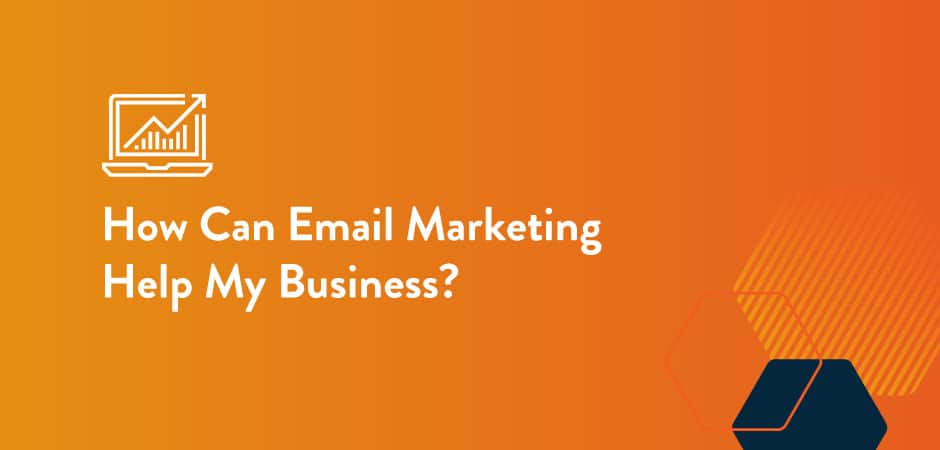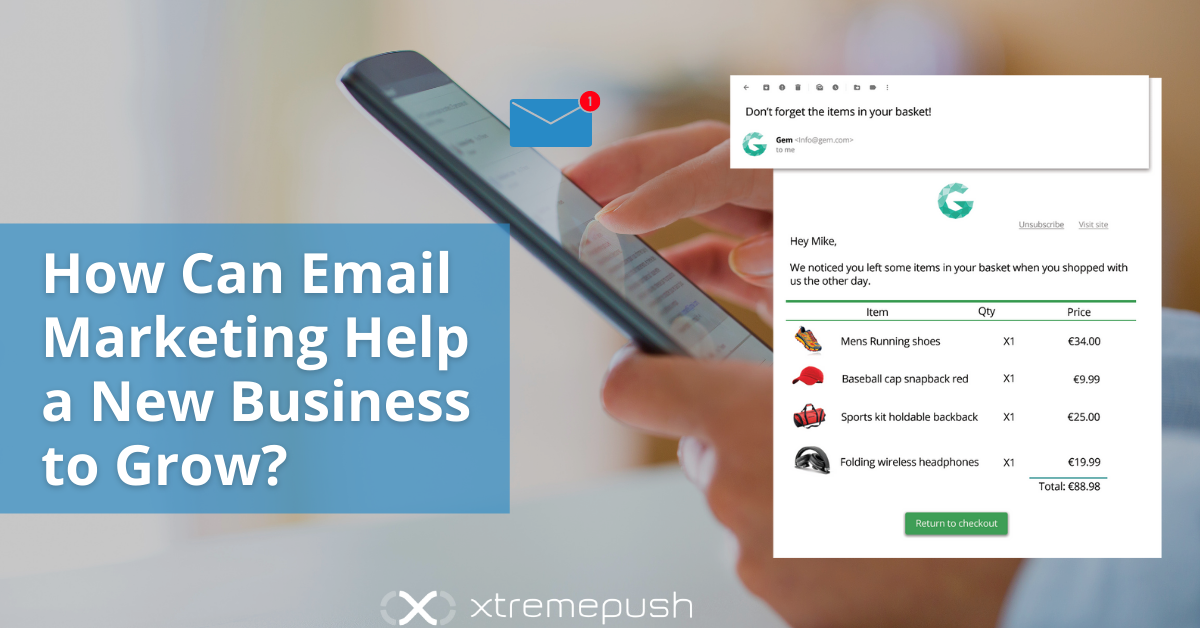Email marketing can help new businesses grow by reaching potential customers efficiently. It provides a direct communication channel, fostering brand awareness and engagement.
How Can Email Marketing Help A New Business To Grow? Starting a new business is challenging. You need effective strategies to reach your target audience and drive growth. Email marketing is one such powerful tool. It lets you connect with potential customers directly, build relationships, and promote your products or services.
This approach not only enhances brand visibility but also encourages customer loyalty. You can share valuable content, special offers, and updates with carefully crafted emails, keeping your audience engaged and informed. As a result, email marketing can significantly contribute to the growth and success of your new business, making it an essential part of your marketing strategy.

Credit: saffronavenue.com
Introduction To Email Marketing
Email marketing is a powerful tool for new businesses. It helps build relationships with customers. It also drives sales and fosters loyalty. Understanding how to use email marketing can make a big difference for your new business. This section will introduce you to email marketing and its key benefits.
Importance For New Businesses
Email marketing is crucial for new businesses. It allows direct communication with potential customers. You can send updates, promotions, and news directly to their inbox. This direct line of communication helps in building trust. Trust is essential for any business, especially new ones.
With email marketing, you can reach a large audience with minimal effort. It’s cost-effective and has a high return on investment. For a new business, saving money while reaching many people is vital. Email marketing also provides valuable analytics. These insights help you understand your audience better.
Basic Concepts
Understanding the basics of email marketing is important. First, you need a list of email subscribers. These are people who have agreed to receive emails from you. Building this list should be a priority. You can encourage sign-ups through your website or social media.
Next, craft engaging emails. Your emails should be clear and concise. Include a call to action, like visiting your website or making a purchase. Personalization is also key. Use the recipient’s name and tailor content to their interests.
Finally, track and analyze your email campaigns. Look at metrics like open rates and click-through rates. These metrics help you understand what works and what doesn’t. Adjust your strategies based on this data to improve future campaigns.

Credit: hivehousedigital.com
Building An Email List
Building an email list is crucial for a new business. It helps in creating a direct line of communication with potential customers. By collecting email addresses, you can keep your audience informed about new products, special offers, and other updates. This engagement can foster loyalty and encourage repeat business.
Attracting Subscribers
To grow your email list, you need to attract subscribers. Start by offering valuable content that interests your target audience. Share blog posts, guides, or industry news that solve their problems. Social media is another great tool. Promote your email sign-up through your social channels. This helps reach a wider audience.
Opt-in Forms And Incentives
Opt-in forms are essential for collecting email addresses. Place them in visible areas on your website, like the homepage or blog. Ensure the form is simple and quick to fill out. No one likes a complicated process.
Incentives can boost sign-ups. Offer something valuable in return for their email. This could be a discount, free eBook, or exclusive access to content. Make sure the incentive is relevant to your audience. This way, they find it valuable and are more likely to subscribe.
Crafting Effective Emails
Crafting effective emails is crucial for any new business. Well-crafted emails can capture attention, build relationships, and drive engagement. They can turn prospects into loyal customers. Here, we will discuss how to write compelling subject lines and personalize your email content.
Writing Compelling Subject Lines
A subject line is the first thing recipients see. It determines whether they open your email or not. Keep it short and to the point. Make it interesting and relevant. Use action words that create urgency. For example, “Don’t Miss Our Exclusive Offer” works better than “Special Offer Inside”. Avoid spammy words like “free” or “guaranteed”.
Test different subject lines to see which ones get better open rates. Use A/B testing to find the most effective ones. Remember, the goal is to make the recipient curious. They should want to know more. A good subject line can increase your email open rate significantly.
Personalizing Email Content
Personalizing email content makes your emails feel more relevant. Use the recipient’s name in the greeting. Segment your email list based on interests or behaviors. Send targeted content to each segment. For example, send product recommendations based on past purchases. This shows you understand their needs.
Include personalized offers and discounts. This can increase engagement and conversions. Make your emails feel like a one-on-one conversation. Use a friendly and conversational tone. Personalization helps build a stronger connection with your audience. It can make them more likely to trust and engage with your brand.
Segmenting Your Audience
Segmenting your audience can transform your email marketing strategy. By dividing your subscribers into smaller groups, you can send them more relevant content. This targeted approach can lead to better engagement and higher conversion rates. Let’s explore the benefits of segmentation and how to do it effectively.
Benefits Of Segmentation
When you segment your audience, you can tailor your messages to specific needs. This personalization makes your emails more appealing to readers. They receive content that speaks directly to their interests. As a result, your open and click-through rates improve.
Segmented emails often lead to higher sales. When subscribers get content that matches their interests, they are more likely to buy. Segmentation also helps reduce unsubscribe rates. People stay subscribed because they find your emails useful.
Another benefit is improved customer retention. Sending relevant content keeps your audience engaged. They feel valued and understood, which builds loyalty. Loyal customers are more likely to return and make repeat purchases.
How To Segment Effectively
Start by collecting data on your subscribers. This can include their location, age, and preferences. Use this information to create different segments. For example, you can have a segment for customers interested in a specific product.
Behavioral data is also useful for segmentation. Track how subscribers interact with your emails. Do they click on links related to a particular topic? Use this data to refine your segments. This ensures each group gets the most relevant content.
Testing your segments is essential. Send different emails to different groups and analyze the results. See which segments respond best to certain types of content. Adjust your strategy based on these insights to improve your future campaigns.
Remember to keep your segments updated. As your audience grows, their preferences may change. Regularly review your data and refine your segments. This ensures your emails remain relevant and engaging over time.
Automating Email Campaigns
Automating email campaigns can significantly help new businesses grow. It saves time and ensures consistent communication with customers. By using automated emails, businesses can send timely messages without manual effort. This strategy can improve customer engagement and drive sales.
Setting Up Automation
First, choose an email marketing platform. Many platforms offer automation features. They can help you schedule and send emails to your audience. Next, create a series of emails that align with your goals. Think about the journey of your customer. What information do they need at each stage? Design emails that cater to these needs.
Set triggers for your automated emails. Triggers are actions that start the email sequence. They could be a new sign-up, a purchase, or a specific date. Ensure your emails provide value and are relevant to the trigger action. Test your automation setup to ensure it works as expected. Monitor the performance and make necessary adjustments.
Types Of Automated Emails
Welcome emails are the first type of automated email. They greet new subscribers and introduce your business. These emails should be friendly and informative. They set the tone for future communications.
Abandoned cart emails are another type. They remind customers of items they left in their cart. These emails can encourage customers to complete their purchases. Include a clear call-to-action and a reminder of the benefits of the product.
Follow-up emails are also important. They check in with customers after a purchase. These emails can ask for feedback or suggest related products. They help maintain a relationship with the customer and can lead to repeat business.
Event-triggered emails are sent based on specific actions. These could be a customer’s birthday, an anniversary, or a special sale. These emails feel personal and timely, increasing engagement.
Measuring Email Campaign Success
Measuring the success of your email marketing campaigns is crucial. It shows how well your business is growing. This process helps you understand what works and what needs improvement. You can focus your efforts on strategies that bring the best results.
Key Metrics To Track
To measure the success of your email campaigns, track these key metrics:
- Open Rate: This shows how many people opened your email.
- Click-Through Rate (CTR): This measures how many recipients clicked on links within your email.
- Bounce Rate: The percentage of emails that could not be delivered.
- Unsubscribe Rate: The rate at which recipients opt out of your email list.
- Conversion Rate: This shows how many recipients completed a desired action, such as making a purchase.
| Metric | Description |
|---|---|
| Open Rate | Percentage of recipients who opened the email |
| Click-Through Rate (CTR) | Percentage of recipients who clicked on a link |
| Bounce Rate | Percentage of emails that were not delivered |
| Unsubscribe Rate | Percentage of recipients who opted out |
| Conversion Rate | Percentage of recipients who completed a desired action |
Analyzing And Improving Performance
After tracking these metrics, analyze the data to identify trends and patterns. Ask yourself questions:
- Are certain subject lines leading to higher open rates?
- Do certain types of content lead to more clicks?
Use these insights to improve future campaigns. Split test different elements of your emails, such as:
- Subject lines
- Call-to-action buttons
- Email layout
Make adjustments based on what you learn. Regular analysis and refinement will help you achieve better results over time.
Integrating Email With Other Channels
Integrating email marketing with other channels can amplify your business’s reach. Using email marketing alongside social media and content marketing can create a powerful synergy. This integration ensures a cohesive message across all platforms, engaging your audience effectively.
Social Media Integration
Combining email marketing with social media can increase your audience engagement. Share snippets of your email content on social platforms to intrigue your followers. You can also include social sharing buttons in your emails. This encourages subscribers to share your content with their networks.
Consider running exclusive promotions for your email subscribers on social media. This can build excitement and grow your email list. Social media can also be a great place to gather feedback on your email campaigns. Use this feedback to improve your future emails.
Content Marketing Synergy
Email marketing can enhance your content marketing efforts. Share your blog posts, videos, and other content directly with your audience through email. This ensures your content reaches those most interested in it.
Use your emails to drive traffic to your website. Include links to detailed articles, guides, and resources. This can boost your website’s SEO and keep your audience engaged with your brand. Create a content calendar to ensure your email and content marketing efforts are aligned.
| Channel | Integration Tip |
|---|---|
| Social Media | Share email snippets and promotions |
| Content Marketing | Include links to blog posts and guides |
Combining these channels ensures a consistent brand message. It also maximizes your marketing efforts’ impact, helping your new business grow.
Staying Compliant With Regulations
Staying compliant with email marketing regulations is vital for new businesses. It builds trust with your audience and avoids legal issues. Understanding the rules can be challenging, but it is crucial for growth.
Understanding Gdpr And Can-spam
The General Data Protection Regulation (GDPR) and CAN-SPAM Act are key regulations. They protect consumer privacy and set guidelines for email marketing.
GDPR applies to businesses operating within the European Union. It requires obtaining explicit consent before sending emails. It also mandates businesses to provide clear options to opt-out.
CAN-SPAM Act applies in the United States. It requires businesses to avoid misleading subject lines. Also, it mandates including a physical address in emails. Businesses must honor opt-out requests promptly.
Best Practices For Compliance
Following best practices ensures compliance and builds trust. Here are some tips:
- Always get explicit consent before adding someone to your email list.
- Provide a clear and easy way to unsubscribe in every email.
- Use honest and non-deceptive subject lines.
- Include a valid physical postal address in your emails.
- Regularly clean your email list to remove inactive subscribers.
A table summarizing the key points for compliance can be useful:
| Regulation | Requirement |
|---|---|
| GDPR | Obtain explicit consent, provide opt-out options |
| CAN-SPAM | Honest subject lines, include physical address |
By understanding and following these guidelines, new businesses can effectively use email marketing to grow while staying compliant.
Case Studies And Success Stories
Understanding how email marketing helps new businesses grow can be challenging. Seeing real-world examples can make it easier. In this section, we’ll explore case studies and success stories. They show how email marketing helped businesses succeed.
Real-life Examples
These examples demonstrate how businesses used email marketing to grow:
- Company A: A small online store increased sales by 30% in six months. They focused on personalized emails and special offers.
- Company B: A local bakery sent weekly newsletters with recipes and promotions. Their customer base grew by 50% in one year.
- Company C: A startup tech company used email marketing to announce new products. They saw a 40% increase in website traffic.
Lessons Learned
These case studies offer valuable lessons:
- Personalization matters: Tailored emails make customers feel valued.
- Consistency is key: Regular updates keep your audience engaged.
- Special offers attract attention: Discounts and promotions drive sales.
- Content variety keeps interest: Mix newsletters, product updates, and tips.
Using these strategies can help your new business grow. Email marketing is a powerful tool when done right.

Credit: www.xtremepush.com
Frequently Asked Questions
How Does Email Marketing Benefit New Businesses?
Email marketing helps new businesses by increasing brand awareness, driving traffic, and generating leads. It allows direct communication with potential customers, building trust and loyalty.
Is Email Marketing Cost-effective For Startups?
Yes, email marketing is cost-effective for startups. It requires minimal investment compared to traditional advertising, offering high returns through targeted campaigns and personalized content.
How Can Email Marketing Increase Customer Engagement?
Email marketing boosts customer engagement by delivering personalized content, special offers, and updates. It fosters a sense of connection and encourages interaction with the brand.
Can Email Marketing Improve Sales For New Businesses?
Yes, email marketing can improve sales for new businesses. It nurtures leads, promotes products, and drives conversions through targeted and timely messages.
Conclusion
Email marketing can help a new business grow efficiently. It builds connections with potential customers. Regular updates keep your audience informed. Personalized messages increase engagement. Analyzing email performance improves future campaigns. With consistent efforts, your business gains trust. This leads to higher sales and long-term success.
Start today and watch your business flourish.





